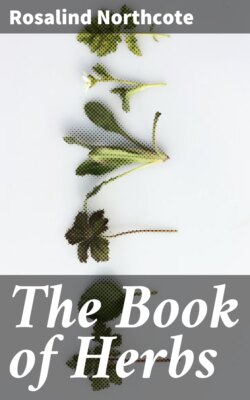Читать книгу The Book of Herbs - Rosalind Northcote - Страница 12
На сайте Литреса книга снята с продажи.
Burnet (Poterium Sanguisorba).
ОглавлениеTable of Contents
The even mead, that erst brought sweetly forth
The freckled Cowslip, Burnet and green Clover.
Henry V., V. ii. 48.
Burnet has “two little leives like unto the winges of birdes, standing out as the bird setteth her winges out when she intendeth to flye. … Ye Duchmen call it Hergottes berdlen, that is God’s little berde, because of the colour that it hath in the toppe.” This is Turner’s[15] information. He has a pleasant style, and tells us out-of-the-way facts or customs in a charming manner. Burnet is the first of the three plants that Sir Francis Bacon desired to be set in alleys, “to perfume the air most delightfully, being trodden upon and crushed.” The others were wild thyme and water-mint. It was a Salad-herb, and has (like Borage) a flavour of cucumber, but it has, most undeservedly, gone out of fashion. The taste is “somewhat warm, and the leaves should be cut young, or else they are apt to be tough. Culpepper and Parkinson advise that a few leaves should be added to a cup of claret wine because” it is “a helpe to make the heart merrie.” Canon Ellacombe[16] says it was “and still is valued as a forage plant that will grow and keep fresh all the winter in dry, barren pastures, thus giving food for sheep when other food was scarce. It has occasionally been cultivated, but the result has not been very satisfactory, except on very poor land, though, according to the Woburn experiments, as reported by Sinclair, it contains a larger amount of nutritive matter in the spring than most of the grasses. It has brown flowers from which it is supposed to derive its name (Brunetto).”
[15] Turner’s Herbal is beautifully illustrated; five initial letters from it are here reproduced.
[16] “Plant-lore and Garden-Craft of Shakespeare.”
INITIAL LETTERS FROM TURNER’S “HERBAL”
